This Post May Contain Affiliate Links. Please Read Our Disclosure Policy.
Want to know how to save money on Whole30? This article will help you squeeze all that deliciousness into your existing grocery budget. From meal plan strategy to specialty items, let me help you learn how to save money on Whole30!
You’re doing a Whole30. Congrats! Most likely, your life is about to totally change. That weird ache you get in your knee when it rains? Kiss it goodbye. Those extra 10 pounds you can’t seem to shed, no matter how little you eat? I hope you weren’t attached to them. That restless sleep that makes you miss your daughter’s newborn stage? Sayonara.
If you’re past, oh, day 10, you’re probably already feeling better. Your jeans might feel a bit looser, you might wonder why you ever relied on a glass of wine at the end of the day to relax, and your wallet is absolutely begging for mercy.
Oh yeah. Whole30 can get expensive. Most likely, you’re eating realer food—and more of it—than ever before. Even if you ate pretty healthy before, you’re most likely not used to eating a protein with plenty of veggies at every meal. And starting a Whole30 from anything other than a paleo diet is super overwhelming; I remember just how panicked I was when day 1 actually rolled around. All the new restrictions and the weird ingredients! It’s easier to just load up on dozens of recipes from Pinterest or a premade meal plan and follow that. Nothing to analyze, just steps to follow.
Problem is, when you make different “recipes” each day, it can get hella expensive. You end up stocking up on things you’ll only use once, clearing out the Tessamae’s section just in case, and buying enough Epic Bars to survive the war.
And then they tell you your grocery total is $250, and excuse me? But I just bought some kale and some eggs and…
Yep, it adds up quickly. But luckily for you, I’m a seasoned Whole30-er and obsessive grocery budgeter! I’m here to help. If you’re looking to learn how to save money on Whole30, this is the post for you.
I even wrote a book on how to save something like $11,000 a year by budgeting food (Don’t ask me how it’s going; it’s shrouded with figurative cobwebs in the depths of my computer’s archives). Bottom line? I know exactly how to make Whole30 more realistic for those of us on a budget.
So… how to save money on Whole30?
1. Make simple meals
It can be so tempting to make all the recipes on Pinterest that are Whole30-compliant and that look delicious. I get it! My Whole30 egg roll in a bowl is off the chain, and my Whole30 Indian butter chicken is totally takeout worthy. My Mexican Whole30 stuffed sweet potatoes are one of my favorite meals ever, and my Whole30 enchiladas have been referred to as “the best thing [they’ve] ever eaten.”
But when you make a new recipe for every meal, you’ll end up with a lot of extra ingredients you don’t really need. Say for one week you want to make…
- Whole30 Indian butter chicken
- Whole30 carnitas bowl
- Whole30 lettuce wraps
- Thai coconut soup with shrimp
- Meatloaf
- BBQ meatballs
You’ll end up with the following ingredients to satisfy the recipe. Here’s the twist: none of these ingredients is reused in any of the other recipes!
- Whole30 Indian butter chicken: cardamom pods
- Whole30 carnitas bowl: pork loin
- Whole30 lettuce wraps: coconut aminos
- Thai coconut soup with shrimp: sugar-free fish sauce
- Meatloaf: compliant ketchup
- BBQ meatballs: compliant BBQ sauce
We’ll talk more about strategizing your specialty items later, but here’s the most fundamental trick that I suggest in how to save money on Whole30: make some recipes, and make some simple meals.
But what does that mean?
Make the butter chicken and get the cardamom pods.
Make the carnitas bowl and get the pork loin.
Make the lettuce wraps and get the coconut aminos.
And then, you know what? Eat leftover carnitas as tacos in lettuce wraps. Make a chicken stir fry with some Asian veggies and season it all with coconut aminos. Plan for chicken curry in a couple weeks when you’ll use more cardamom pods.
Or keep it even simpler: cook a protein and pair with a couple veggies. We do this frequently with chicken breasts and steaks: we’ll sauté them up, serve them with my amazing chimichurri or garlicky Whole30 immersion blender mayo, make some garlicky kale and steam a sweet potato in the Instant Pot for side dishes. After you make the chimichurri (which we always have in our fridge), that dinner requires four ingredients: protein, garlic, kale, sweet potato. Doesn’t get much simpler than that, right?
Specifically, we always keep plenty of Whole30-compliant sausages in the fridge and freezer, because they make a fantastic quick lunch paired with some roasted broccoli or other veggie. Aidell’s chicken apple sausage is great, but we actually prefer what The Casual Gourmet offers. We’ve had roasted garlic sausage and spinach sausage from Costco that we just adore, and we cook a couple links up often when we’re just too fried to make a fancy dinner. These kinds of foods are totally your friend. Take advantage of them! (But don’t take advantage of your, you know, human friends.)
So punctuate your “recipes” with simple meals, following the Whole30 meal template. This will allow you to purchase ingredients that are seasonal and on sale, helping you save money and optimize the nutritional content of your food, and will simplify what’s necessary for dinner anyway. Plus, it’ll give you a break! I know just how difficult it can be to constantly be following a recipe, so a few quick and simple meals a week can be a super welcome reprieve for both your wallet and your mind.
2. Make it yourself
That Whole30 meatloaf and BBQ meatballs we were talking about? If you buy premade compliant ketchup and BBQ sauce, you’re setting yourself back something like $6-7 a bottle. Thing is… it costs something like $2 to make it yourself! The same goes for mayo and ranch dressing: not only are these way, way better homemade, but they’re far cheaper. Tessamae’s is great to have on hand for emergencies, but I always recommend making your own when you can. Here are a few recommendations for staples you should DIY:
- Whole30 ketchup
- Whole30 BBQ sauce
- Whole30 immersion blender mayo
- Whole30 ranch dressing
- Chimichurri (because it’s delicious on seriously everything)
You’ll be able to save good money by making these at home, plus they’re just so much better homemade anyway. Try it when determining how to save money on Whole30!
3. Focus on sale and cheap produce and ingredients
It’s the middle of winter: time for my Whole30 strawberry basil avocado chicken!
Just kidding… strawberries will set you back an arm and a leg right now, not to mention the fresh basil and avocados! In the middle of summer, this recipe is an amazing way to use fresh, nutrient-dense produce that’s inevitably on sale. But in the middle of winter? Buy seasonal: sweet potatoes and citrus and squash.
Not only is seasonal food better for you (Ever seen the inside of a January strawberry? Yeah… it’s white.), but it’s way cheaper. By focusing on sale and seasonal produce and ingredients, you’re able nail down how to save money on Whole30.
In fact, I let sale and seasonal foods guide my meal plan when I’m on a tight budget. Here’s what I do: I create a large Pinterest board of Whole30 recipes that sound good to me. Then I hit my grocery store’s flyers, making note of what ingredients are on really good sales: produce, meat and seafood, even pantry staples. From there, keeping what’s on sale in mind, I go to my Pinterest board and pick recipes that utilize those ingredients. Or, like in tip #1, I simply plan to purchase those sale foods and use them in simple meals. Sweet potatoes and kale are frequently on sale, so they’re frequently on our table. You feel me? You feel me.
4. Pick just a couple specialty items
Back to #1, it’s easy to get swept up in the need to buy all the specialty items. When you hodgepodge a meal plan together, you’ll often be surprised by expensive specialty items that you won’t end up reusing: coconut aminos are a great example. When we did our first round, I bought a bottle and use it in one recipe. It was something like $11(!!!) at Whole Foods, so that was basically $10.50 wasted… and that adds up on a Whole30!
Instead, scan your recipes’ ingredients lists before you head to the grocery store and pick just a couple of specialty items that you’ll get. Maybe you’re really into Thai food, so sugar-free fish sauce might be the best specialty item in which to invest. Since my first round, I’ve discovered an absolute obsession with coconut aminos, so I highly recommend picking up a bottle. They add a lovely sweetness to recipes, and you can find them way cheaper than what I paid at places like Sprouts Farmers Market (try Big Tree Farms!).
Or maybe you’re like my friend who’s obsessed with ketchup. Although I’d still recommend making your own Whole30 ketchup, having a bottle on hand could be a lifesaver for her to take to work. Get the ketchup, girl!
Whatever it is, strategize the specialty items you’re going to buy. Just don’t buy all of them. Big saver when determine how to save money on Whole30!
5. Buy in bulk
I will talk to a brick wall about Costco, y’all. I love that place. It’s simply heaven for a budget-minded natural-food lover like myself. A giant bottle of pure maple syrup for $11? OK, OK, OK. A 2-pound jar of almond butter for $9? Mhm, I’m gonna need that. 3 packages of Aidell’s chicken apple sausage for $10? Yeah, yep, yes please.
Before every Whole30, we take a trip to stock up and buy in bulk. This happens, of course, after we’ve strategized your meal plan, thought through the simple meals you’ll make, and have gone deep in your grocery stores’ sale flyers.
When we find an amazing deal on something like sweet potatoes (And in December, you can usually get those suckers for $0.50 a pound!), we buy a ton. And we eat a ton! We might make baked sweet potatoes with ghee and cinnamon one night, my loaded sweet potato fries the next, my sweet potato apple breakfast bake the next week, or sweet potato home fries on the side of one of our simple meals. We get creative and make good use of the foods that served us financially.
Or say I find chicken breasts for $1.00 per pound. I’ll buy as many as they will freaking let me, and freeze all but one package. In fact, in our freezer right now, we have 2 pounds of scallops (That I got on an unbelievable sale at Sprouts Farmers Market), grass-fed ground beef from Costco, 3 packages of boneless skinless chicken breasts, individually wrapped tilapia filets, and chicken thighs gifted to me from a local farmer.
As a bonus, when we stock up smart and buy in bulk, not only do we save money, but we always have something we can eat. If what’s on the meal plan doesn’t sound appetizing at all, I can always quickly thaw a tilapia filet, blacken and sear them, then serve them a quick avocado mash over some of the cauliflower rice we absolutely always have in the freezer. Quick, cheap, and we’re prepared, making us less likely to quit our Whole30. Win win win win.
Once we’ve stocked up on sale items, we’ll hit Costco. Costco is my favorite store before a Whole30, and my Whole30 Costco shopping list will totally show you why. We have our definite favorites, like their almond butter and Kerrygold grass-fed butter, their Jamaica Blue Mountain coffee and grass-fed ground beef. We always stock up on plenty of compliant sausage, since we make it so often for lunch or a quick dinner, and I always buy giant bags of pre-cut kale and broccoli to serve as easy side dishs. We buy organic baby spinach, organic salad mixes, mini peppers, avocados, hothouse cucumbers, you name it. I find their produce section to be phenomenal: the produce is quite fresh, and the prices are amazing. Fab organic offering, too!
Be careful to only buy what you will truly eat, though. If you buy giant bags of organic kale and broccoli but don’t eat them, you didn’t save anything at all, right? Not the best thing to do when figuring out how to save money on Whole30.
So think through what you’ll really eat and eat often, and buy that in bulk. Use my Whole30 Costco shopping list as a guide before you go and plan which staples you’ll buy there. Don’t splurge spontaneously, but be smart about stocking your fridge and pantry like you would a restaurant. Fancy!
6. Be smart about where you shop
On the same note, strategize which stores you’ll go to for which ingredients. I’m a huge fan of Costco and Sprouts Farmers Market, obviously, but I can’t always get everything there. Since I’m kind of a grocery store groupie, I know what I can get where, so I hit each store accordingly. This helps me focus on how to save money on Whole30! Here’s how it usually goes for me:
- I go to Costco first, because if I can get it there (and I need it in that volume), it’s almost always best to get it here. Things like avocado oil, coconut oil, olive oil, almond butter, sausages, grass-fed beef, frozen fish, broccoli, kale, spinach, organic apples, dates (!!!), sweet peppers, cucumbers, mushrooms, Brussels sprouts, organic eggs, Kerrygold butter (for ghee), actual ghee if you can find a Costco that offers it (We have one in Memphis, so definitely look!), berries, frozen cauliflower rice, frozen broccoli (perfect for a quick lunch: roast it up like you would fresh broccoli), Spindrift lightly juiced sparkling water, and ice cream (JUST KIDDING). They offer LaCroix at Costco, but I find it’s usually cheaper elsewhere.
- I go to Sprouts Farmers Market next, because their produce is better and cheaper than anywhere else, if I can’t find it at Costco. I also make sure to stock up on my staples there, since they’re cheaper than Whole Foods or ordering online. And if I need weird spices, like cardamom for the Whole30 Indian butter chicken, I buy them from the bulk spice section. This means smaller quantities = less financial and literal waste. Sometimes the meat is cheaper here; sometimes it’s cheaper at a standard grocery store. I make sure to compare on items like this that can get expensive by opening my grocery store’s app when I’m at Sprouts. Sometimes Kroger will surprise me!
- I go to Kroger last and pick up everything I couldn’t get at Costco or Sprouts, with one exception: sparkling water.
- Sometimes Kroger has the best prices on sparkling water (including LaCroix and Dasani sparkling), but a lot of times, Target is where it’s at. I make sure to check my Target app to see if there are any sales or Cartwheel deals (<<< super important), and I can often leave with like 40 boxes of LaCroix Curate for about $3 a box. Killer deal. Sometimes Target has a good deal on Spindrift, but I usually buy that at Costco. I don’t drink it daily, but I like it here and there.
7. Strategize your meal plan
Strategizing your meal plan is a critical part of that book I, you know, will one day finish. It’s all about finding common denominators amongst your recipes’ ingredients lists. Say you’re making those Whole30 carnitas, but you only need 2 pounds of pork loin. If you put 6 other dinner recipes on your meal plan that do not use pork loin, you’re being wasteful both with food and with money.
Instead, think about how you can use this cheap piece of meat to stretch your grocery budget across 2-3 days. Maybe you could double the carnitas recipe and eat them, like we mentioned before, one day as a carnitas salad bowl and the next as lettuce wrap tacos. Or perhaps you keep the carnitas recipe as written, and you save the rest of the pork loin for this garlic-rosemary balsamic roasted pork. Boom, done.
And since you’re buying fresh rosemary for that pork recipes, maybe you should find a chicken recipe that uses fresh rosemary as well. My cranberry apple chicken thighs are easy and Whole30-compliant, and that fresh rosemary adds the most heavenly herbaceous taste.
And… you know, since you’re making my cranberry apple chicken thighs, why not try another chicken thigh recipe that week? Chicken thighs are cheap and usually come in a package of 6-8, so another recipe would fit in beautifully with your budget. Maybe you’re straight up sick of cooking from recipes, so you follow my method for perfect-every-time chicken thighs, the basis of that cranberry apple chicken thighs recipe, and serve them with their crispy skin and tender meat with a jar of my chimichurri recipe. Delish.
Of course, since you already have chimichurri on hand, why not make a quick steak? Pick up a couple ribeyes as your splurge for the week, and balance the meal financially with some super cheap garlicky kale and a baked sweet potato with ghee and cinnamon. Perfection.
See how the workflow of strategizing your meal plan can work? When thinking how to save money on Whole30, this part is so key. Find common denominators and let them inspire you from there. You’ll waste less food and less money, and those are always good things.
How to Save Money on Whole30
When it comes down to it, knowing how to save money on Whole30 is based on a few simple ideas that I’ve honed over several rounds. Are you trying to learn how to save money on Whole30? What have you found works for you?



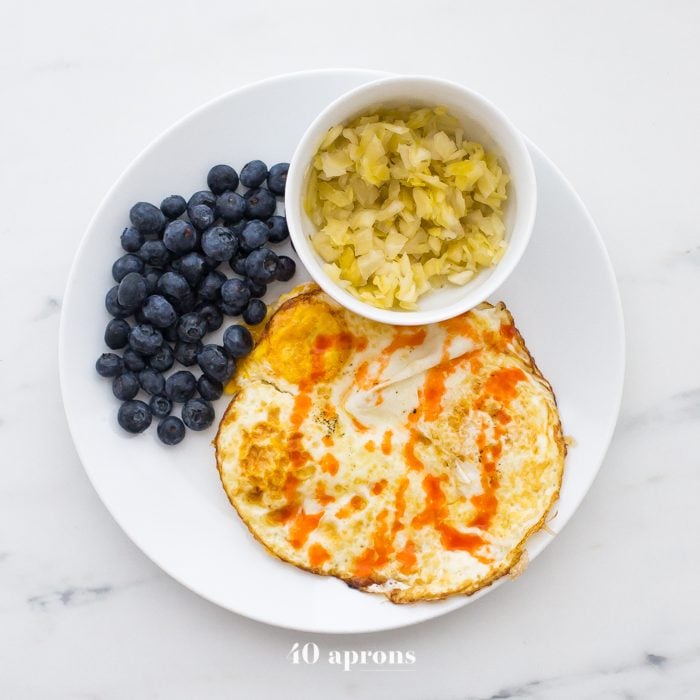
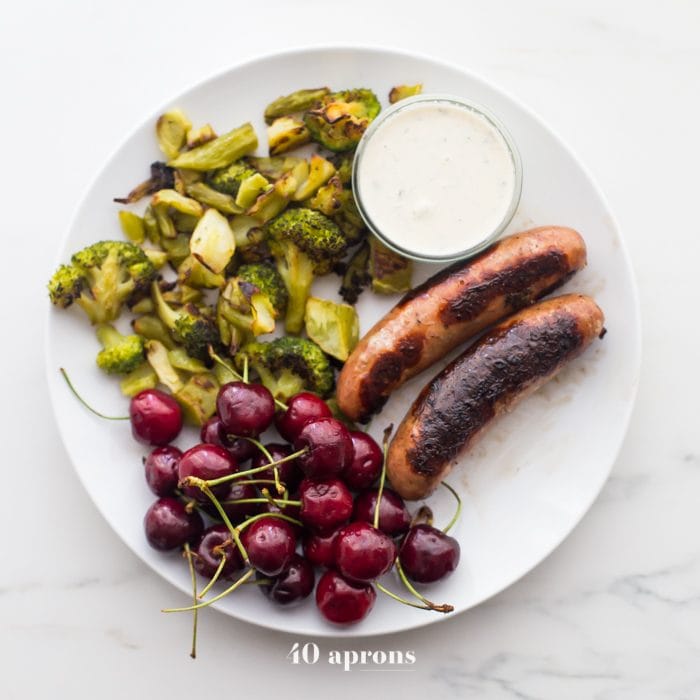
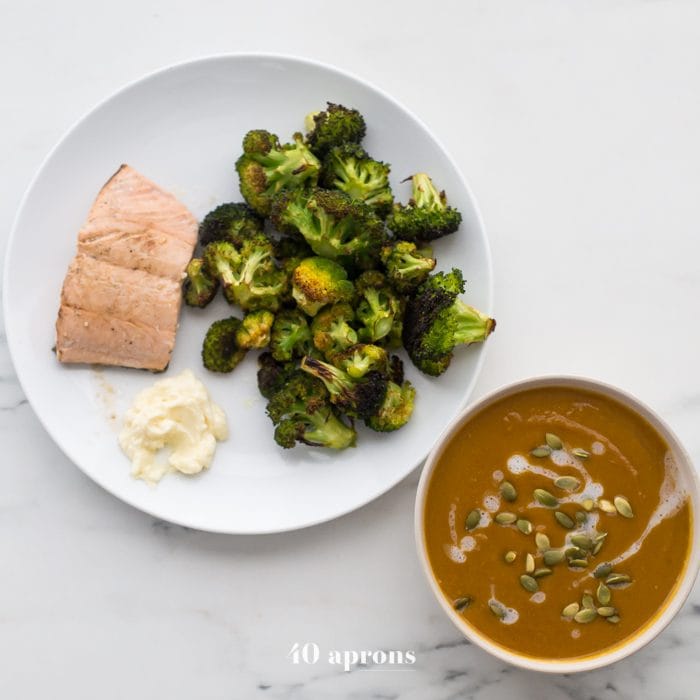

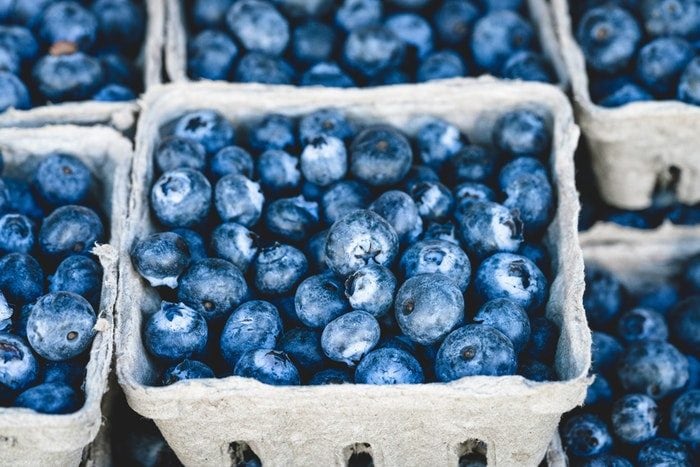
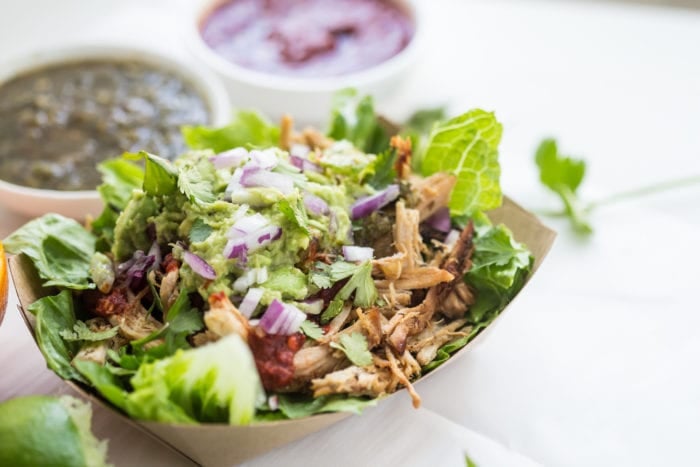
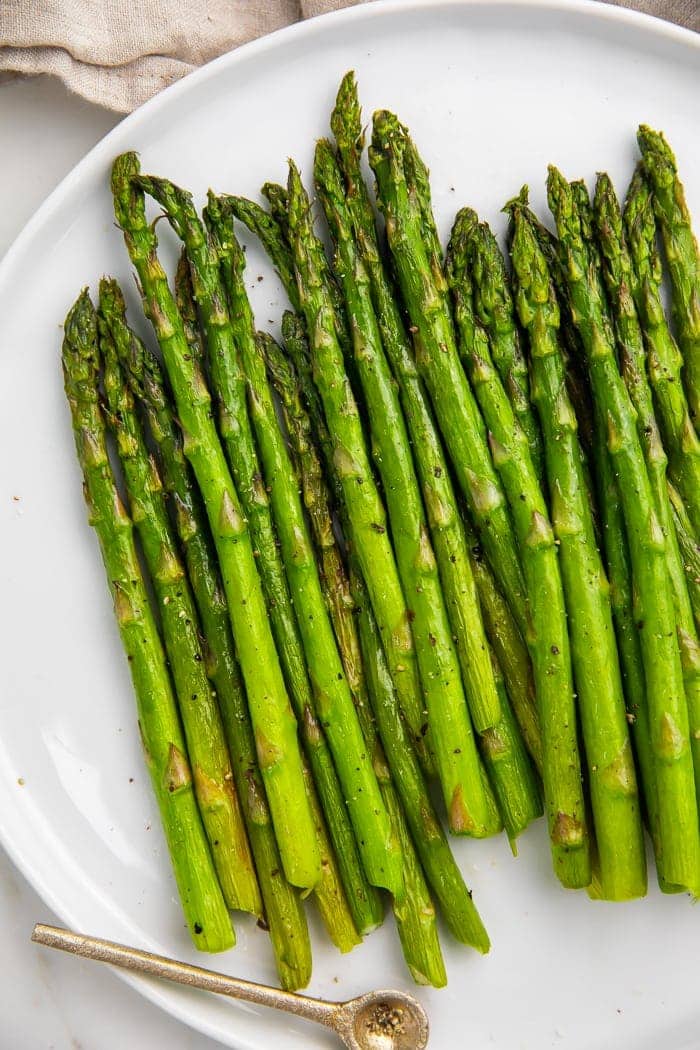
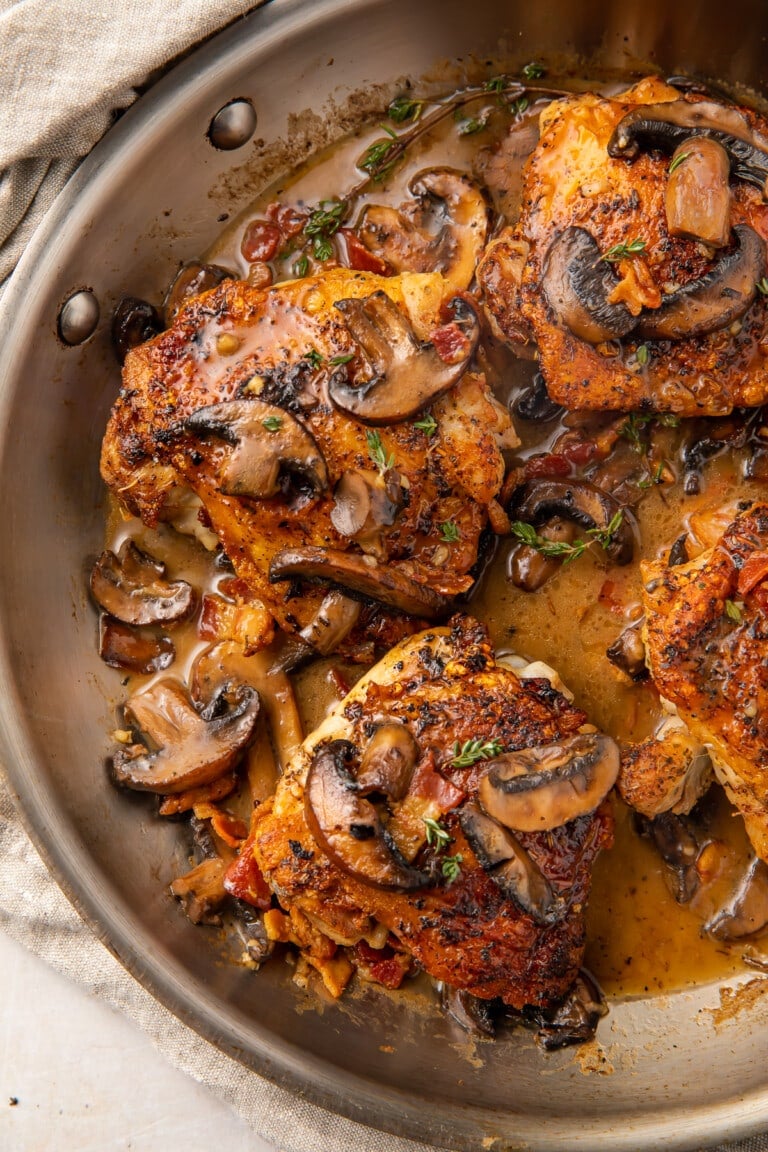


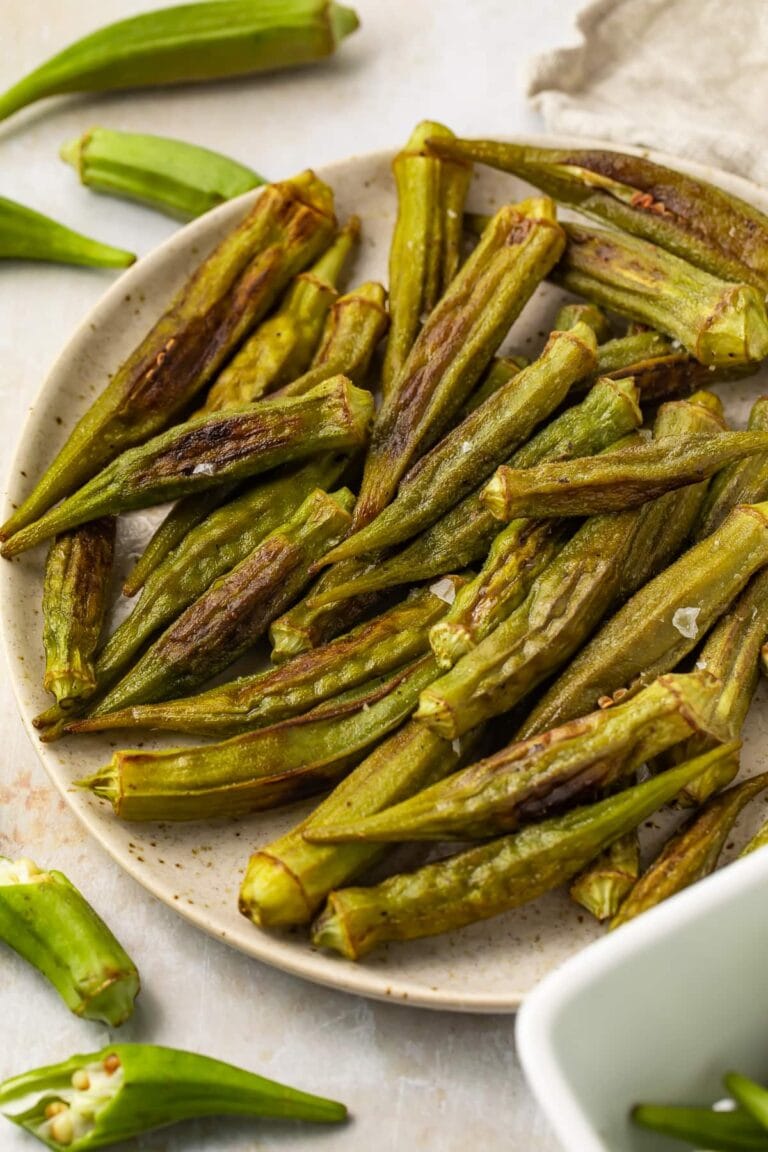
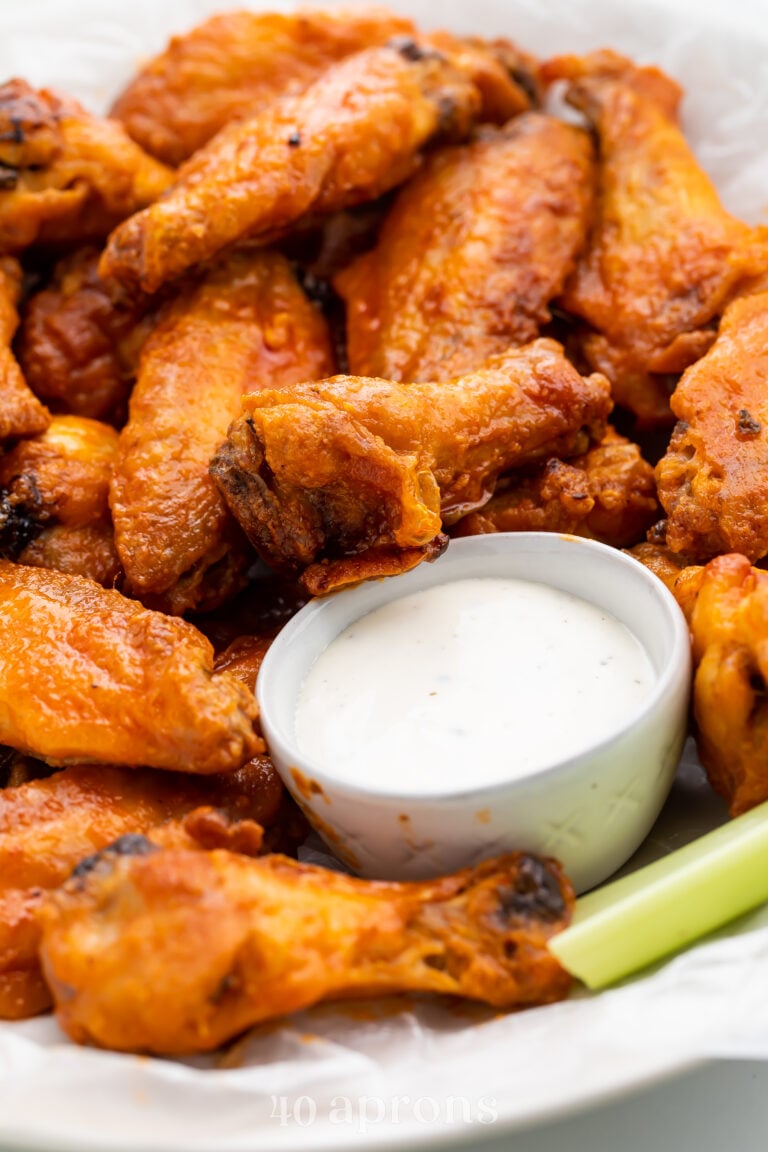










do you tho k sprouts is even cheaper than using a website like thrive. I’m new to all this and can’t decide if thrive is worth the money. we have a sprouts but I always assumed it was priced like whole foods.
With Sprouts vs. Thrive, it’s going to be a matter of really, really watching sales and offers and scooping certain items up when they’re priced lower. I love both and think they work really well together. I also love that Thrive has their own brand, so they can offer staples really cheap. Sprouts is NOT as expensive as Whole Foods, though, but even WF is getting cheaper since they were bought by Amazon.
If you want to try Thrive, I have an offer for my readers for 25% off their first three orders. Awesome deal ESPECIALLY if you stock up in those first three!
http://go.thrv.me/aff_c?offer_id=88&aff_id=22406
Reading this has convinced me I need to stop on the way home and get the ingredients to make your chimichurri and put it ON EVERYTHING!
I am a grocery budgeting queen since my first Whole 30 in July. Husband and are started a round Monday and my wallet is actually happy because it usually cuts back on our food budget since we don’t eat out. Thanks for the practical and easy advice!
Yes! We save on wine, too – ha! And chimichurri on everything is absolutely the best way to live. Trust me on this!
ABsolutely loved this post it helped me so much! thank you so much!
xoxo macey
I’m so glad it was helpful for you!!